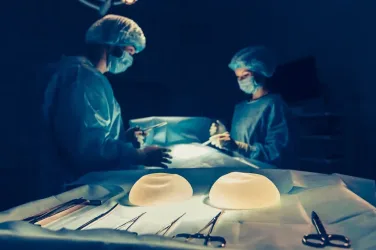
By Annette Brooks
Medical-grade facial peels are an effective way to rejuvenate your skin. Applied topically, they exfoliate, brighten, and refine your complexion, minimizing wrinkles, pores, dullness, scarring, and discoloration.
There are different types of peels with varying degrees of strength. Some are light, leaving your skin refreshed and glowing with little to no recovery time required. Deeper, stronger peels that stimulate the production of new collagen can deliver dramatic results. Below we explore a few different types of peels, but there are many more. Often, a combination of active ingredients is used in today’s customized designer peels.
Alpha-hydroxy (AHA), beta-hydroxy (BHA), and polyhydroxy (PHA) peels are typically milder exfoliants and can be applied to your face without the use of a numbing agent unless you’re getting a deep peel.
PHA peels are generally less irritating and are recommended for sensitive skin. AHA peels include enzyme and glycolic, lactic, and citric acid products. Glycolic acid, derived from sugar cane, is the reigning gold standard in peels. They come in mild, medium, and deep strengths based on the percentage of glycolic acid in the formula. “Natural” fruit enzyme peels are gaining popularity, with enzymes derived from pumpkin (yes, pumpkin is a fruit), papaya, pomegranate, pineapple, and figs that break down dead skin.
BHA peels tend to penetrate deeper into the skin than AHA peels. They include ingredients like salicylic acid, which helps remove surface oil, unclog pores, and evening out skin tone. Salicylic peels can be a good choice for acne-prone skin.
TCA (trichloracetic acid) chemical peels exfoliate and renew the skin, addressing hyperpigmentation, acne scars, fine lines and wrinkles, and sun damage. This type of peel is customized by applying more layers. Commonly used in a medium strength, there’s going to be some associated downtime, but you’ll love the healthier, smoother, brighter skin revealed once healing occurs.
A phenol peel can drastically improve skin tone, texture, and pigmentation. It’s an aggressive peel, penetrating deep into the skin, affecting the epidermis and the dermis. This type of peel usually requires a sedative and/or IV anesthesia during the procedure and an anesthetic cream to numb the face. Since a deep peel like this involves a more prolonged healing period, expect at least two weeks of downtime.
If you’re new to medical-grade peels, it’s a good idea to start with a lighter peel and see how it works for you and how your skin responds before trying a deeper peel. An experienced licensed aesthetician or dermatologist will evaluate your skin and recommend a peel that’s right for you.
Don’t Skip or Skimp on Aftercare
Carefully follow the post-care treatment instructions you receive from your dermatologist or aesthetician after you get a peel.
Keep your skin amply hydrated. Your provider can recommend products that don’t contain irritating ingredients.
Don’t use products with AHA, BHA, or PHA acids, retinol, or Retinol-A products until your skin is back to normal or your provider gives you the go-ahead.
Use warm water to wash your face using a mild, soap-free cleanser. Do not scrub or use anything abrasive on your skin as it heals.
Treated skin will peel and flake for two to five days and longer if you get a deep peel. Don’t pick or pull off peeling skin. Let it slough off naturally.
Peels increase your skin’s sensitivity to the sun’s harmful UV rays. Stay indoors as much as possible and wear sunscreen during recovery. If you must go outside, keep it to a minimum and wear a high SPF, broad-spectrum sunscreen.










